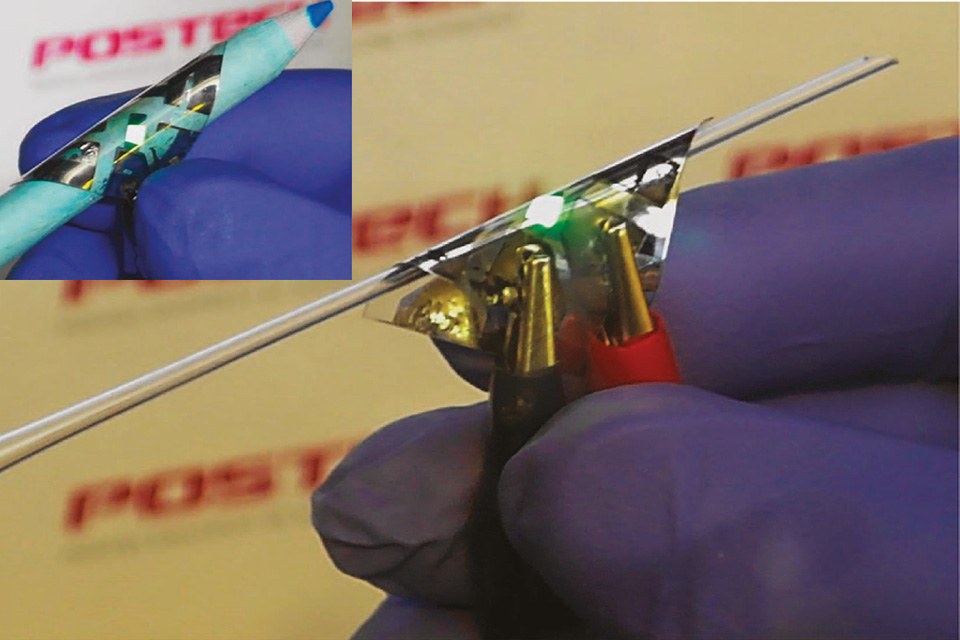Researchers Propose Graphene Anode for Flexible OLEDs
In their research article, Tae-Hee Han, Min-Ho Park, Sung-Joo Kwon, Sang-Hoon Bae, Hong-Kyu Seo, Himchan Cho, Jong-Hyun Ahn and Tae-Woo Lee from the Pohang University of Science and Technology and the Yonsei University in Korea respectively investigated the use of praphene anodes for ultra-flexible OLED devices. The original article, "Approaching Ultimate Flexible Organic Light Emitting Diodes Using a Graphene Anode", is published in NPG Asia Materials (2016) 8, e303; doi:10.1038/am.2016.108 online on September 9, 2016.
Summary:
Ultimate flexible organic light-emitting diodes (OLEDs) should have an ultra-high device efficiency, a low-efficiency roll-off at a high luminance and excellent flexibility. Here, we realized flexible tandem OLEDs using a graphene anode with a very high electroluminescent efficiency of ~ 205.9 cd/A, 45.2% (~396.4 cd/A, 87.3% with a hemispherical lens) and a very low efficiency roll-off at a high luminance of ~ 6.6% at 10 000 cd/m² (~3.8% with a hemispherical lens) by stacking two organic electroluminescence (EL) units. For the first time, we used an easily controlled and low-temperature processable charge generation layer with lithium nitride (Li3N). This simultaneously provided efficient stacking of EL units and enhanced compatibility of the flexible device on a thin plastic substrate. The flexible tandem OLEDs with a graphene anode also showed great flexibility against bending up to a bending strain of 6.7%. These results represent a significant advancement towards the production of next-generation flexible displays and solid-state lighting that use a graphene anode.
For more details, please read the original article at http://www.nature.com/am/journal/v8/n9/full/am2016108a.html or downlod the article as PDF.
The work was supported by a National Research Foundation of Korea (NRF) grant funded by the by the Ministry of Science, ICT & Future Planning (MSIP) (NRF-2016R1A3B1908431), and the Nano Material Technology Development Program through the National Research Foundation of Korea (NRF) funded by
the Ministry of Science, ICT & Future Planning (MSIP) (NRF-2014M3A7B4051747).

